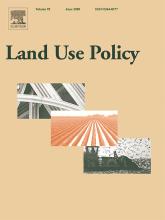Resource information
Land as an essential resource is becoming increasingly scarce due to population growth. In the case of the Kenyan coast, population pressure causes land cover changes in the Arabuko Sokoke Forest, which is an important habitat for endangered species. Forest and bushland have been changed to agricultural land in order to provide livelihood for the rural population who are highly dependent on small-scale farming. Unclear land rights and misbalanced access to land cause uncontrolled expansion and insecure livelihoods. Secure land rights are crucial to improve living conditions for the local smallholders. Socio-economic and land tenure conditions were assessed in a study area close to Malindi in south-east Kenya to understand the human-induced changes in land cover. A combination between biophysical and socio-economic methods was used to identify the relationship between land cover change, land tenure and other socio-economic factors. Analyses in Geographic Information System (GIS) were chosen to examine in historical photographs and recent satellite imagery land cover changes between 1954 and 2017. This analysis was combined with quantitative questionnaires conducted on-site in 2017 and 2018 to identify factors influencing the land cover changes and especially to analyze the effects of land tenure on sustainable land use to reduce further land conversion. Moreover, this study statistically investigated the impact of land tenure issues on the tree population of the respective land plots using non-parametric tests as well as dependency analyses. We found significant relationships between the income of the interviewees and the tree population on land plots. It also appears that the fragmentation of land cover on a plot differs between respondents who have inherited their land and respondents who have purchased their land.


